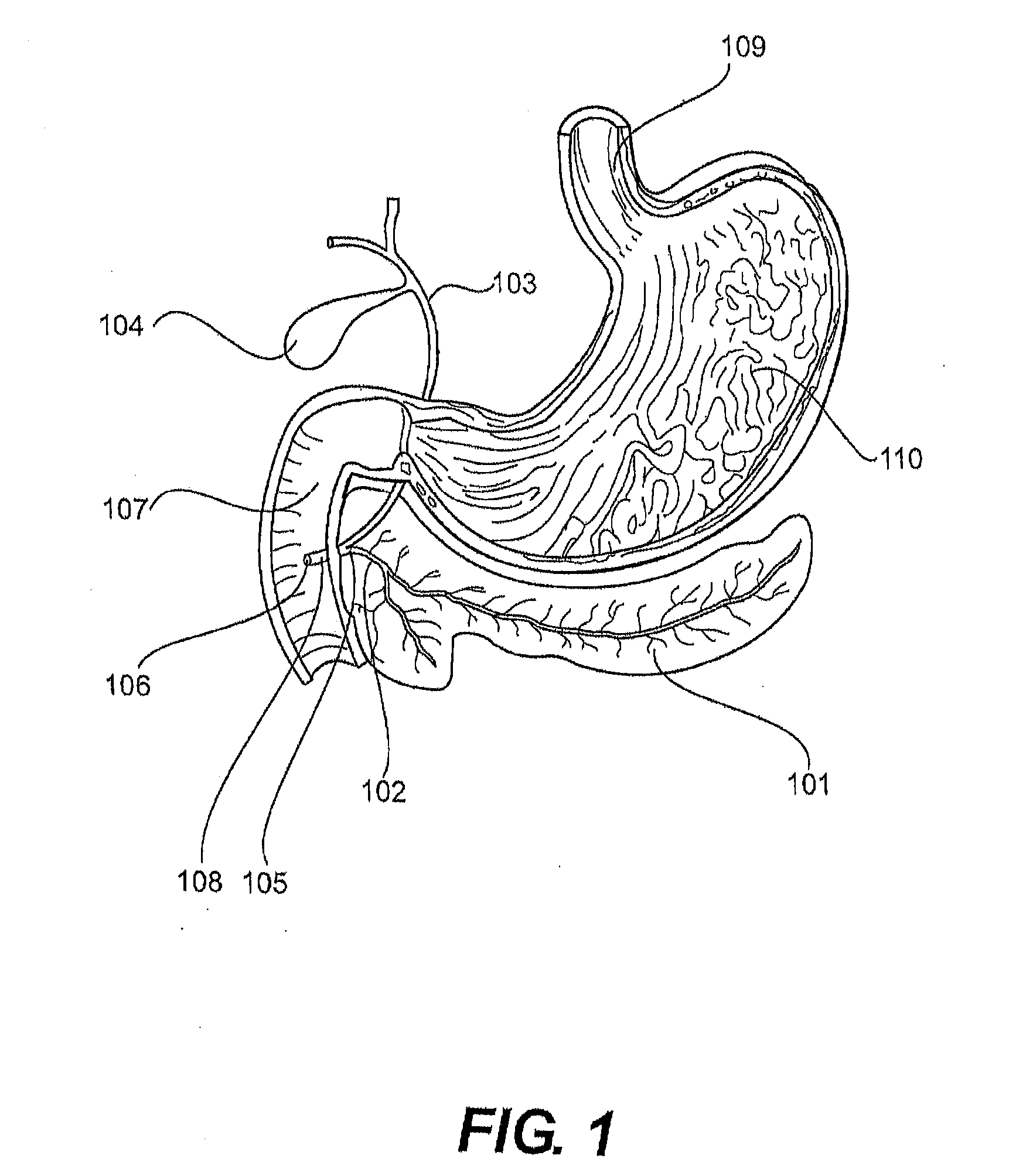Vacuum-assisted pancreaticobiliary cannulation
a technology of biliary cannulation and vasodilation, which is applied in the field of medical devices, can solve the problems of difficult cannulations, high risk of perforation or other damage to tissue, and a significant challenge in cannulation of either the bile duct or the pancreatic du
- Summary
- Abstract
- Description
- Claims
- Application Information
AI Technical Summary
Benefits of technology
Problems solved by technology
Method used
Image
Examples
Embodiment Construction
[0022]The pancreaticobiliary system, illustrated in FIG. 1, includes the pancreas (101), the pancreatic duct (102), the common bile or biliary duct (103), and the gallbladder (104). The pancreatic and biliary ducts join at the hepatopancreatic ampulla (105) (also known as the ampulla of Vader), which lies just behind the major duodenal papilla (106). The papilla (106) is a small opening that leads into the duodenum (107) to allow for the release of pancreatic juice and bile into the duodenum to aid in digestion. Smooth muscle of the hepatopancreatic sphincter (108) (also known as the sphincter of Oddi) regulates flow of pancreatic juice and bile into the duodenum. The minor duodenal papilla (not shown) is a separate small opening in the duodenum, upstream of the major papilla (106), that leads into the accessory pancreatic duct. The minor papilla is usually nonfunctional (i.e., does not release pancreatic juice into the duodenum) and may be absent, for example in patients lacking an...
PUM
 Login to View More
Login to View More Abstract
Description
Claims
Application Information
 Login to View More
Login to View More - R&D
- Intellectual Property
- Life Sciences
- Materials
- Tech Scout
- Unparalleled Data Quality
- Higher Quality Content
- 60% Fewer Hallucinations
Browse by: Latest US Patents, China's latest patents, Technical Efficacy Thesaurus, Application Domain, Technology Topic, Popular Technical Reports.
© 2025 PatSnap. All rights reserved.Legal|Privacy policy|Modern Slavery Act Transparency Statement|Sitemap|About US| Contact US: help@patsnap.com



